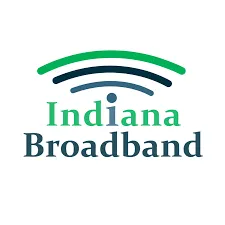
Internet that
actually works.
We're not a giant corporation. We're your neighbors, building fiber and wireless networks for the communities we live in. Real speeds, real support, no contracts.
Check your ADDRESS.
Instant check for fiber or wireless service in your area.
We live here too.
On-Ramp Indiana started because we were tired of the same thing you're tired of—slow speeds, dropped connections, and support lines that put you on hold for an hour.
We're based in Noblesville. When you call us, you talk to someone who probably shops at the same grocery store as you. That's the way it should be.

Internet for EVERYONE
Whether you're at home, running a business, or managing a property—we have a plan that fits.
Residential Fiber
Blazing-fast fiber for your home. Stream, game, and work without limits.
Learn moreBusiness Fiber
Dedicated connections with symmetrical speeds and priority support.
Learn moreFixed Wireless
High-speed wireless for rural areas where fiber isn't yet available.
Learn moreEnterprise & MDU
Custom solutions for apartments, HOAs, and large organizations.
Learn moreWhat our customers SAY.
Real reviews from real neighbors across Indiana.
"I've had ORI for 5 plus years and had minimal issues during that time. The guys were always eager to fix problems as they popped up and now that they've made some upgrades its been smoother than ever! If you're looking for an internet solution and live where getting internet could be tricky give them a try."
"Great service and customer service. After years of poor cable customer service, it is refreshing to have a company care about the service that they provides as well as the customer service experience. I highly recommend ORI if you're in a rural area."
"Quality staff. Local. Real people you can talk to who are local (Noblesville). A satisfied customer for 9 years now!!!"
"Customers since 2019 and by far one of the easiest companies to work with. We rarely have any issues with our service but when something comes up, they address it quickly. If you are looking for reliable service, top notch customer service, at a fair rate, this is the place!"
"Long time customer. Just wanted to give a very positive review to Mike in customer support who helped me get back up and running after a problem with my modem. ORI has always been quick to respond whenever there is a problem!"
"Love this company! 1000 times better than CenturyLink which is one of the only options where I live. They are occasionally issues but that is what I expected when I chose to move to the country. They always get out here to help me when I need it."
"We have been with On Ramp for 4 yrs now and have been very happy with them. They are quick to respond if we ever have problems and have not taken advantage of us by raising their rates. I also love supporting our local companies!"
"I absolutely love On-Ramp Indiana! This family-owned business is top-notch. I started with them for web hosting and quickly added broadband service, and later, a cloud server. The best part is how easy everything was with them!"
"My club has used On Ramp Indiana as our website host for several years now. We always receive a prompt response with any service tickets. We're very happy with them and would recommend them to anyone."
"A client we service near down-town is in an internet dead-zone. No Comcast or ATT unless you pay thousands. We opted to try ORI's fixed Wifi. Since 2019 ORI has been pretty reliable and their support is responsive."
"Been a customer since 2016. Reliable internet and awesome support for questions and help when needed. I highly recommend ORI."
"This has been the only internet company that will respond back in a timely manner when we have problems with their signal. The others would not respond and did not really care about their service. Great company with great service to their customers."
"I've been a loyal customer of ORI's web hosting since the turn of the century and hate to think what these last twenty-some years would have been like without their expertise and commitment to customer service."
Proud members of LEADING industry organizations.
We're committed to industry best practices and staying connected with the broadband and business communities we serve.

WISPA
National trade association for fixed wireless broadband providers.
FISPA
Supporting fiber-optic internet service providers.

Indiana Apartment Association
Serving the multifamily housing industry in Indiana.

IBTA
Advancing broadband and telecommunications in Indiana.

Noblesville Main Street
Supporting downtown Noblesville businesses and community.
Active participation in industry organizations helps us deliver better service and stay ahead of technology trends.
News & Updates
What's happening at On-Ramp Indiana?!
No posts available at the moment.
Visit our blog